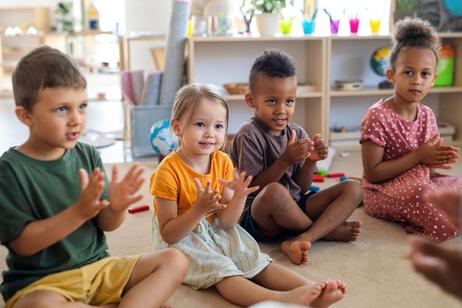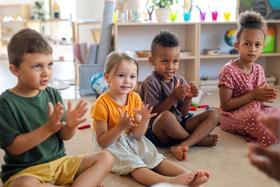As parents, we face critical decisions shaping our children's educational journey. One of the challenging choices is whether to have our child repeat kindergarten or move forward despite having a birthday near the usual cut-off date. This article delves into the pros and cons of repeating kindergarten for children with cusp birthdays, aiming to assist parents in making informed decisions that best support their child's academic and emotional development.
PROS of Repeating Kindergarten for Cusp Birthday Children
Academic Readiness
Repeating kindergarten provides children additional time to develop essential pre-academic skills, ensuring they are adequately prepared for future learning. These skills may include letter recognition, basic numeracy, fine motor skills, and language development. The extra year can also foster a love for learning, setting a positive tone for the rest of their academic journey.
Emotional and Social Development
Younger children in the classroom might struggle to keep up emotionally and socially with their older peers. By repeating kindergarten, cusp birthday children can build confidence and social skills at a more appropriate pace. They can mature emotionally, enhancing their ability to navigate social interactions and adapt to the school environment effectively.
Leadership and Confidence
Being among the eldest in the class can naturally lead to opportunities for cusp birthday children to take on leadership roles. These roles can help boost their self-confidence and overall development. As they interact with younger classmates, they might act as role models and develop valuable mentoring skills.
Reducing Academic Pressure
The decision to repeat kindergarten can help alleviate academic pressure on children who may not be developmentally ready to handle more challenging tasks. By giving them an additional year before entering higher grades, they can feel more at ease with the learning process, contributing to their long-term academic success.
This video offers a checklist to help you assess your child's readiness for Kindergarten.
CONS of Repeating Kindergarten for Cusp Birthday Children
Potential Stigma
Repeating a grade could lead to social stigma or feelings of inadequacy, as children might perceive themselves as not being as advanced as their peers. This stigma might come from both classmates and the child themselves, which could negatively impact their self-esteem and confidence.
Lost Year
There is a risk that cusp birthday children might find the repeated year unchallenging academically if they have already acquired the necessary skills. In such cases, they may become disinterested or bored, hindering their motivation to learn and potentially affecting their academic progress in the future.
Age Gap
Remaining a year behind in the same grade can create a significant age gap with classmates. This age difference might affect friendships and social interactions, as children may struggle to relate to their older or younger peers.
Delayed Milestones
Holding children back a year might delay their reaching important developmental milestones compared to their peers. Delayed milestones could impact their long-term educational journey and future academic achievements.
ALTERNATIVES: Considering Other Options
Transitional Programs
Some schools offer transitional programs for children with cusp birthdays, providing a middle ground between kindergarten and first grade. These programs focus on individualized instruction, ensuring each child receives appropriate academic and emotional support.
Individualized Education Plans (IEPs)
Schools can create tailored IEPs to address the specific needs of cusp birthday children, regardless of age. IEPs may include personalized learning goals, targeted interventions, and accommodations to help children progress academically and socially.
This video explains what an Individualized Education Plan is and how it works.
Early Intervention
Early intervention programs can provide additional support to ensure cusp birthday children are academically and emotionally ready for the challenges ahead. These programs may involve early literacy and numeracy activities, speech therapy, or social skills training.
Repeating kindergarten for children with cusp birthdays is a complex decision with advantages and disadvantages. While it can offer children a solid foundation and emotional readiness, it may also lead to potential challenges related to age differences and self-esteem. Parents must evaluate their children's needs, considering their academic and emotional readiness and exploring alternatives to ensure they receive the best educational experience. Consulting with teachers, school administrators, and educational experts can provide valuable insights to make an informed choice that sets your child up for a successful educational journey. Remember, the ultimate goal is to support your child's holistic development and help them flourish academically and emotionally.
Background
When did the practice of grade retention first appear?
The practice of grade retention, also known as repeating a grade or being held back a year in school, has existed for many decades. The origins of grade retention can be traced back to the early 20th century in the United States and likely earlier in other parts of the world.
Repeating a grade was initially viewed as a way to provide struggling students additional time to master the required academic skills before moving on to the next grade level. It was seen as a means to help students catch up and bridge the learning gaps they might have encountered.
Historically, grade retention was common, often based on subjective teacher assessments and classroom performance rather than standardized criteria. As educational research evolved and more attention was given to the social and emotional aspects of learning, concerns arose about the potential negative effects of grade retention on children's self-esteem and motivation.
Over time, educational practices and policies have shifted to a more holistic approach, considering various factors affecting a student's academic progress. Today, many educational systems and schools aim to provide personalized learning plans, early intervention programs, and other strategies to support struggling students rather than relying solely on grade retention.
The effectiveness of grade retention as an educational intervention has been a subject of ongoing debate, with studies presenting conflicting findings on its long-term impact. As a result, many educators and policymakers now focus on evidence-based practices and alternative approaches to ensure students' academic success and emotional well-being.
Assessment
Is the decision to hold a child back most often based on a subjective assessment or with more formal readiness assessment tools?
The decision to hold a child back a grade (grade retention) can vary depending on the educational system, school policies, and individual circumstances. In the past, grade retention was often based on subjective assessments made by teachers and school administrators. These assessments were primarily influenced by the child's academic performance, behavior, and perceived readiness to move on to the next grade level.
However, educational practices have evolved, and there has been a shift towards using more formal and evidence-based readiness assessment tools. These tools aim to provide a more objective and comprehensive evaluation of a child's academic and developmental progress and their social and emotional readiness for the next grade level.
Formal readiness assessment tools may include:
Standardized Tests
These tests evaluate a child's academic skills in reading, writing, math, and language. They provide quantitative data that can be compared to national or regional benchmarks.
Developmental Milestones Assessment
This assessment focuses on a child's developmental progress in areas such as gross and fine motor skills, communication, and social interactions.
Teacher Observations and Checklists
Teachers may use structured observation tools and checklists to assess a child's behavior, social skills, and engagement in the classroom.
Parent Input
Parents are often asked to provide information about their child's development, strengths, and challenges.
Individualized Education Plans (IEPs)
For children with learning disabilities or special needs, IEPs are developed, outlining specific educational goals and support strategies.
These formal assessment tools can help provide a more comprehensive picture of a child's readiness to progress to the next grade level. They also support a more>
The Kindergarten Readiness Test (KRT) and the School Readiness Test (SRT).
Assessment tools like the Kindergarten Readiness Test (KRT) and School Readiness Test (SRT) are designed to evaluate a child's readiness to enter kindergarten or the school environment, respectively. These tools provide valuable insights into a child's developmental progress and preparedness for formal education's academic and social demands. The efficacy of these assessment tools depends on several factors, including their design, validity, reliability, and how they are used in the educational context.
Assessing Developmental Progress
The KRT and SRT typically assess a range of developmental domains, such as language and literacy skills, mathematical understanding, fine and gross motor skills, social interactions, and emotional development. By evaluating these domains, educators and parents can identify areas of strength and areas that may need additional support before the child begins formal schooling.
Early Identification of Learning Gaps
These assessments can help identify potential learning gaps or developmental delays in children before they enter kindergarten or school. Early identification allows for timely intervention and support, enabling educators to tailor educational strategies to meet each child's individual needs.
Data-Driven Decision Making
The results from KRT and SRT can be used as valuable data points to inform educational decisions. Educators can use this data to create individualized education plans (IEPs), implement targeted interventions, and design differentiated instruction to address specific areas of concern.
Parent and Teacher Communication
Assessment results can facilitate meaningful discussions between parents and teachers. Parents better understand their child's strengths and weaknesses, enabling them to support their child's development at home. Teachers can also use the data to build appropriate classroom environments and curricula that align with their students' needs.
Monitoring Progress Over Time
These assessment tools can track a child's progress over time. By periodically assessing school or kindergarten readiness, educators can measure growth and the effectiveness of interventions, making adjustments as needed.
Improving Education System
Aggregated data from the KRT and SRT can help educational institutions and policymakers identify trends and patterns in readiness levels. This information can inform improvements in early childhood education programs and policies to support children's successful transition to formal schooling.
However, it's essential to acknowledge that no single assessment tool can fully capture the complexity of a child's readiness for kindergarten or school. Children develop at different rates and possess diverse learning styles. Therefore, these assessments should be considered part of a comprehensive evaluation, along with teacher observations, parental input, and other data sources.
Furthermore, the efficacy of these tools depends on their appropriate use and interpretation. Teachers and educators need training to administer the assessments properly and interpret the results accurately. Properly implemented, these assessment tools can support children's successful transition to kindergarten and beyond.
Questions? Contact us on Facebook. @privateschoolreview
#KindergartenReadiness #SchoolReadiness #AssessmentTools #EarlyChildhoodEducation #EducationMatters #ChildDevelopment #ParentingTips #SchoolTransition #EducationalSupport #ChildReadiness





















